Waiheke Musical Museum is a unique treasure where visitors can not only see heritage instruments, but play many of them as well. The voices of our instruments are alive, making for a truly MUSICAL museum experience.
What’s the difference between a mouth organ and a harmonica?
A mouth organ has 2 reeds per note with a set vibrato.
A harmonica has 1 high quality reed per note that allows the player to create his own vibrato at a speed that suits the music being played.
The harmonica also has a chromatic lever on one end, which means that you have the sharps and flats.
There are many different shapes and sizes of mouth organs and harmonicas
Harmonicas and mouth organs
There are two unusual ones in this photo.
In this photo there is a large bass harmonica, and a treble harmonica beside it showing its chromatic lever.
The red and blue mouth organ in front is a two-sided one which gives you a different key (or scale) each side.
What’s the difference between a concertina and an accordion?
In their simplest form, a concertina (a 6 or 8 sided instrument) and an accordion work on a similar principle: air blown across reeds as valves are opened by depressing a note.
The bellows produce this air as they are pulled apart or pushed together. The common scale is played in the same way as a mouth organ, that is, blow, suck (push/pull), blow, suck, blow, suck, suck, blow.
They were developed from around 1830 and gradually vast improvements were made to accommodate more skillful players – some requiring virtuoso ability.
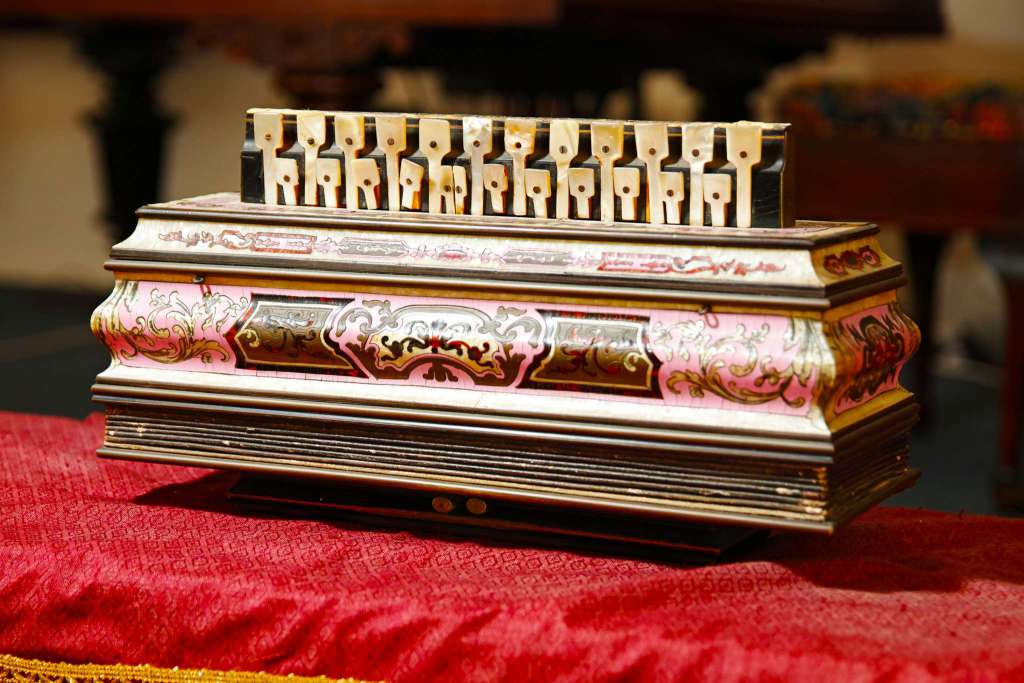
Busson, France, 1840s
Piano Accordion
One difference between a concertina and an accordion is that a concertina plays single notes on each button on both treble and bass sides, whereas the accordion bass has octaves and and chords. Most accordions and piano accordions have the option of either vibrato or straight pitch on the treble side
Later with accordions a piano keyboard replaced the buttons on one side and the bass was extended giving it a much greater range. However, in some continental countries large, highly developed button accordions are still popular and can be played with great skill.
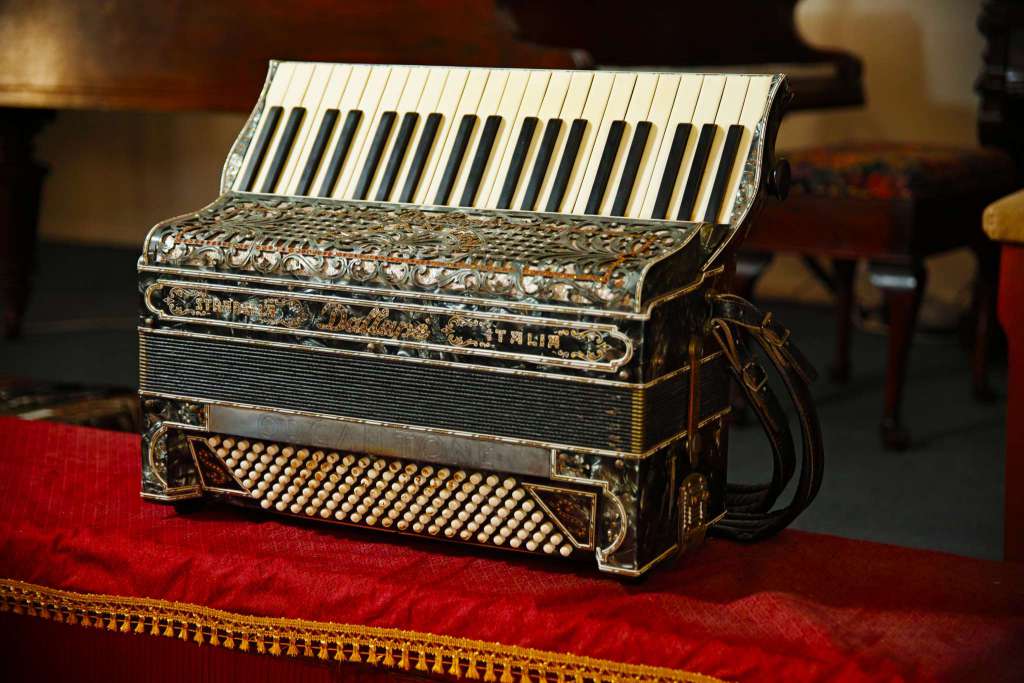
Dallape, Italy, 1920s
With a piano, what does the term ‘overstrung’ mean?
Early pianos were ‘straight strung’ as shown in the photo below.
The bass strings were in a vertical line and the bass bridge was placed very close to the edge of the soundboard where flexibility is limited.
When ‘overstringing’ was developed, the bass strings were placed in a diagonal position so that they were actually over the lower section of the treble strings.
This made it possible to place the bass bridge over toward the right and up nearer the centre of the soundboard so that the tone was greatly improved.
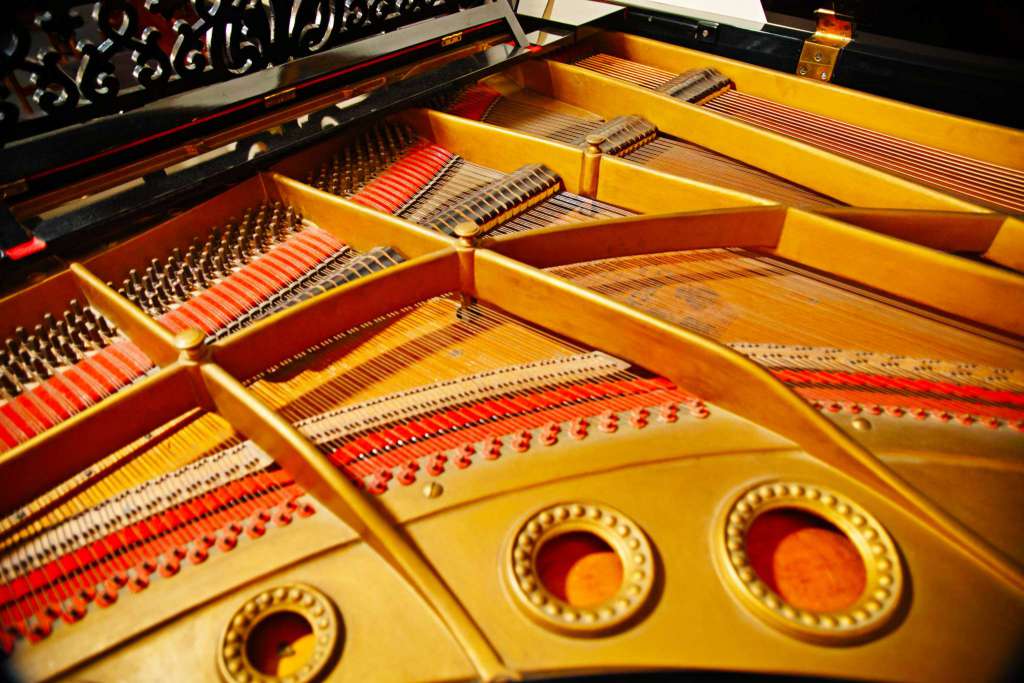
Bechstein, Berlin.
What’s the difference between a clavichord and a harpsichord?
The clavichord has a tangent action. Its strings run from the tuning pins (1) across the soundboard and are secured by the hitch pins (2) in the left part of the instrument where strips of felt (3) are woven through the strings to act as dampers. The tangent (4) is a brass wedge set into the far end of the pivoted key (5). When the key is struck the tangent is raised, coming smartly into contact with the string (6) dividing it into 2 parts. The right part, between the tangent and the bridge (7), vibrates to produce the appropriate note, but the left part is silenced by the damping action of the felt. The falling tangent damps the whole string.
The main difference between a clavichord and a harpsichord is that with the clavichord the string is struck, whereas with the harpsichord the string is plucked.
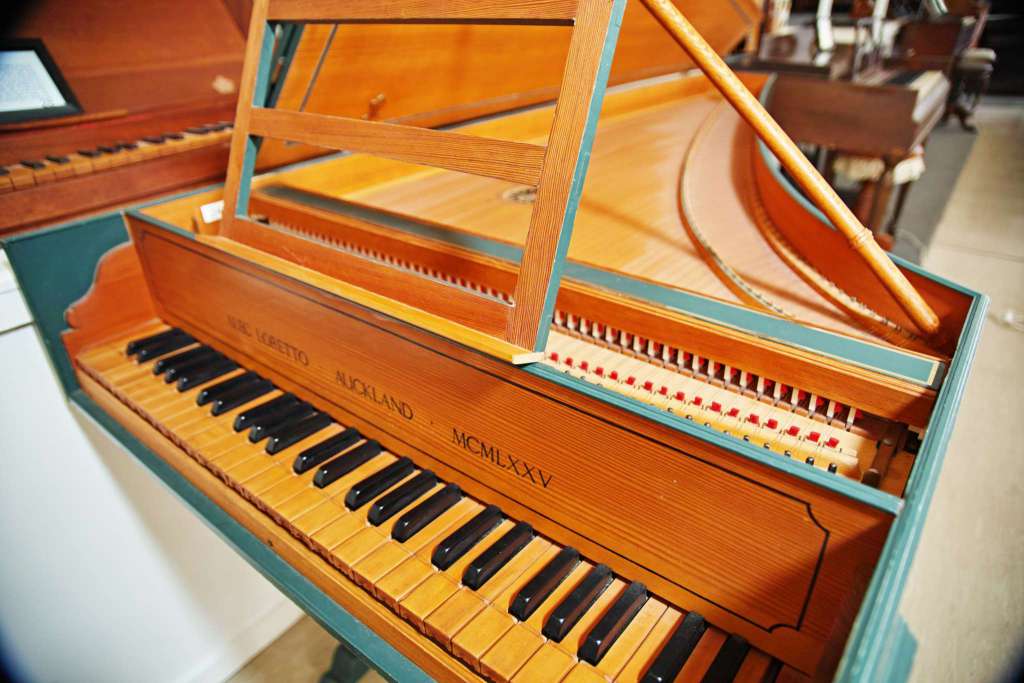
Wilhelm Matthias, 1980s
Clavichord & Harpsichord
The clavichord shown is a shallow oblong box with a small, square soundboard, just up one end. There’s a lot of string area without soundboard under it.
Pressing a key causes a metal tangent to bob up and strike a string, as detailed in the image.
This causes the string to vibrate and make a sound.
The harpsichord has a nice big soundboard with strings straight up and down over it.
In the area marked with an arrow are the plectrums, which pluck the string when a key is pressed. The plucked string produces a different sound to a struck string.
The harpsichord consists of a wooden soundboard above which are a series of strings stretched to produce different pitches.
These strings are made to vibrate by the plucking of a plectrum, which is connected by a simple pivot mechanism to the keyboard.
When a player depresses a key (1), the pivoting motion raises a wooden jack (2) and the plectrum (3), set in a tongue hinged to the side of the jack, plucks a string (4). When the player releases the key the jack falls back allowing a felt (5) to rest on the string, thus damping unwanted vibrations, and plectrum slides silently past.
Organ reeds – What are they like and how do they work?
Metal reeds, usually of brass, were developed early in the 19th century. They look like this photo here.
Air flowing across a mounted reed causes it to vibrate and make a sound pitched according to its shape and size.
They can be shaped so that they imitate various instruments, such as a flute, oboe or piccolo, etc.
Organ stops and how they work
Organs can have hundreds of reeds that are activated by the foot pedals sucking air via the bellows into an equaliser bellow from where the air is dispersed to any bank of reeds where stops are open.
Each stop opens up a bank of reeds so that the air flows over them as the note is depressed.
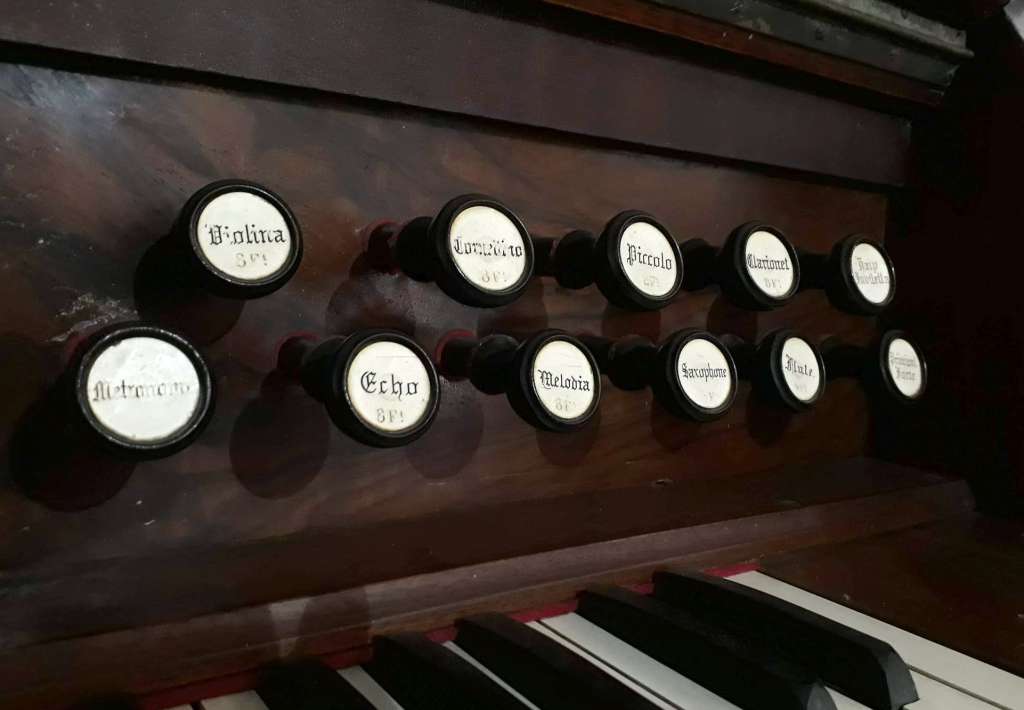
Pianolas & how they work
The pianola works on a pneumatic system using a vacuum created either by foot-operated bellows or by an electric motor. The paper roll runs over a tracker bar, a metal strip with a row of holes in it, one for each note. In more advanced systems there are also hoes for dynamics and pedaling. Each hoe is connected to the pneumatic actions by pipe known as the pneumatic tube. At the end of the tube there is a flexible pouch. Above this is a valve. This area is normally held in a vacuum.
When a hole in the piano roll passes over the corresponding hole in the tracker bar, the vacuum is broken and air rushes down the pneumatic tube causing the flexible pouch to expand and push open the valve. This in turn causes air to rush from a hinged bellow associated with that note down into the instrument’s vacuum chamber. The bellow collapses and as it does so it operates the piano action and plays a note. The action responds immediately because the bellows are collapsing rather than inflating. Pianolas initially operated over 65 notes and used rolls that were 11.25 inches wide with 6 holes per inch. Later, standardisation between manufacturers took place and rolls were produced with 9 holes per inch, allowing all 88 notes to be played.
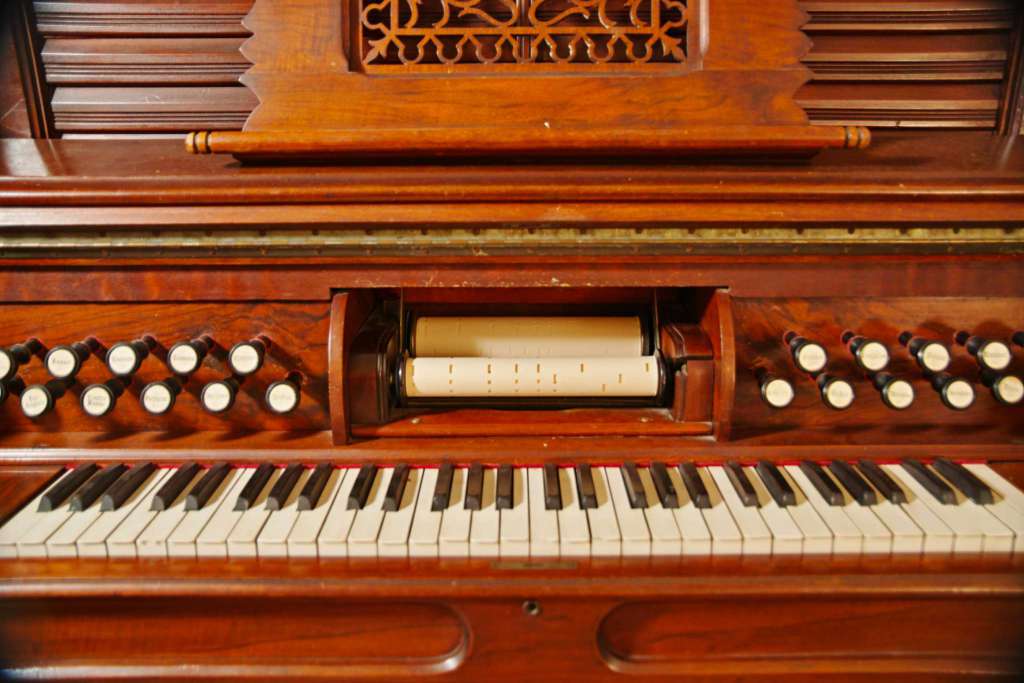
Wilcox and White, USA, 1891